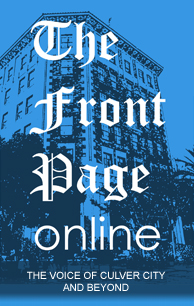By Paul Ehrlich
After reading several articles in the newspaper and talking with some community members, it is apparent that factual information on Measure CC needs to be re-told before next Tuesday’s election on the school bond.
1. Measure CC asks the voters of Culver City to authorize the School Board to raise money for a General Obligation bond. What is a General Obligation bond? These are monies to be used for long term capital expenditures, such as new and replacement buildings, technology, energy efficiency and infrastructure. None of the money raised will be used for ongoing General Fund operations.
2. How did the District decide how much money would be needed? After taking a property survey of all of the buildings and discussing the concerns with people who use the facilities, a well-regarded construction company, Balfour Beatty, determined that capital improvements and upgrades (health, safety, infrastructure, and technology) are estimated to be about $165,000,000.
3. How will the public be assured that the monies will be spent properly? Funds will be monitored by the County of Los Angeles, an independent audit and an appointed local citizens oversight committee. The committee will be comprised of a bona fide taxpayers’ group representative, senior citizen, business owner, parent and teacher. It will work directly with the Culver City Unified School District. Independent audits by a qualified accounting firm (C.P.A.) must be conducted annually and be available for public inspection.
4. Who would be responsible to pay for the bond? Commercial, residential, condominiums and owners of vacant properties.
5. When is the five-year, $6,000,000, $96 per parcel, Measure EE scheduled to end? June 2015.
6. How is the tax payment for bond calculated? It is important to understand that the formula for establishing the tax is based on assessed value, not market value. To find out what you will be assessed Google Parcel Viewer on maps.assessor.LACounty.gov website, type in your address on the line “Search by Street Address” without using “N, S, E or W” directions or “Avenue, Street” etc. After you click the Assessor’s number in red, simply add up the land and improvement value. This is the assessed value. The tax would then be 0.00048 times the assessed value. The average assessed value in Culver City is less than $400,000.
7. How did the School District determine the size of the bond authorization of $106,000,000 or $48 per assessed value? Surveys were conducted with likely voters. It should be noted that, if approved, the typical tax in Culver City would be about average for property owners in Los Angeles County.
8. Would my annual tax increase? Under Prop. 13, assessed values typically increase no more than 2 percent a year. However, typical inflation is 3 percent annually. Considering purchasing power, the tax will effectively decrease.
9. How will the passage of Measure CC affect property values? Predicting future values is somewhat inaccurate. By reputation, Culver City property values are high relative to neighboring properties, primarily due to the support Culver City community gives to the public schools. Community support = good schools = high future property values.
10. How long will we be paying for the bond measure? Until the last payment is made to the bondholders in 30 years.
11. What will the bond interest be? Interest rates fluctuate. Bonds will be issued in four installments over the next 12 years. Current interest rates are about 5 percent. Over the last decade, interest rates have generally declined.
Let me know if you have any questions or concerns.
Mr. Ehrlich may be contacted at pmsha@aol.com
